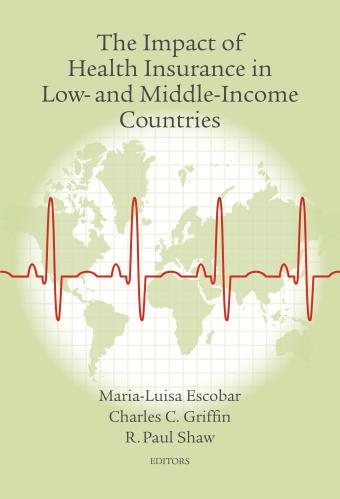The tax cut that Kansas Governor Sam Brownback hailed in 2012 as “a shot of adrenaline into the heart of the Kansas economy” has been partially reversed. After years of sluggish growth and lower than expected revenues that forced brutal reductions in government programs, a Republican-controlled legislature overcame a Brownback veto to restore some of the taxes, paving the way for a moderate boost in spending. While the tax cut turned into a debacle, there is a potential silver lining: three clear messages for policymakers on federal tax reform. First, tax cuts won’t boost growth. Second, special tax rates for businesses will surely generate tax sheltering and revenue losses, but will not produce much new business activity. And, third, most importantly, when Americans see what their tax dollars buy, they choose higher revenues and more government spending over lower taxes and draconian program cuts. These lessons matter all the more because the tax and spending proposals made by President Trump and the House GOP bear important similarities to Brownback’s policies in Kansas.
What happened in Kansas should be a lesson for policymakers. In 2012, a Republican legislature and governor reduced the top income tax rate from 6.45 percent to 4.9 percent. For income from some businesses – including partnerships, LLCs, S-corporations, sole proprietorships – Kansas didn’t just lower the rate, it cut it to zero. In 2013, Kansas passed another tax cut, which would have reduced the top rate for wage income by another percentage point by 2018.
All of this was supposed to boost economic activity in general and business activity in particular. But after the tax cut passed, economic growth in Kansas lagged behind neighboring states and the nation as a whole, and the resulting anemic level of revenues led to ballooning shortfalls, causing significant cutbacks in vital programs such as Medicaid, education, Temporary Assistance for Needy Families, court funding, and infrastructure. Kansas’s bond rating was also downgraded twice in the process.
In any case, faced with a choice between cutting spending further or undoing some of the previous tax cuts, the legislature just chose the latter. It voted to raise the top tax rate on wage income to 5.7 percent and end the special treatment of business income. The tax increases are projected to raise $1.2 billion over the coming two years, which will help close a budget shortfall of almost $900 million. They will also allow the state to pay for the State Supreme Court-mandated increase in school funding.
The Brownback tax cuts were one of the cleanest experiments the country has ever had in measuring the effects of tax cuts on economic growth, and it showed that they were a failure. Congress can learn three lessons from this experience.
The Brownback tax cuts were one of the cleanest experiments the country has ever had in measuring the effects of tax cuts on economic growth, and it showed that they were a failure.
First, tax cuts do not guarantee economic growth. The Kansas experiment is a stunning rebuke of supply-side rhetoric put forth by tax-cut advocates like Arthur Laffer and Stephen Moore, who promised big economic gains. The Kansas tax cut resulted in no apparent growth effects. This is especially damning in its implications for federal reform because, dollar-for-dollar, a state tax cut should have a larger effect on state economic growth than a national tax cut does on the overall economy. The reason: it is easier to exploit tax differentials by transferring resources – labor and capital – across state lines than by importing them from overseas.
Second, special tax rates for business activity mainly generate more tax-sheltering behavior and less revenue. A recent study found that Kansans found it advantageous to convert labor income into business income for tax purposes, even with a tax differential of less than 5 percentage points. They could do it easily, for example, by calling themselves contractors, even without an increase in actual business activity.
Third, the Kansas experience is consistent with the view that people are more willing to pay higher taxes when they can see the link between tax revenues and the societal benefits that government provides. After experiencing the significant cuts to public spending, Kansans voted to oust some of the most conservative GOP legislators in the 2016 elections. In a May poll in Kansas, a bedrock Republican state, 59 percent of those surveyed preferred to solve the state’s budget problems with either tax increases or a combination of tax increases and spending cuts (rather than just through spending cuts).
All of these lessons bode poorly for current Republican federal tax proposals. Like the Kansas tax cuts, proposals from both the House GOP leadership and the President would cut individual income rates and cut tax rates on business income more than the tax rate on wages. President Trump, for example, would reduce the top rate to 35 percent (from 39.6) on wage income and to 15 percent on business income, leaving a 20-percentage point differential that is 4 times as large as the difference that applied in Kansas. This would generate enormous amounts of tax avoidance and tax sheltering activity, opening the door for significant revenue losses.
As in Kansas, Trump and congressional Republicans have been pushing to cut spending as well as taxes. The House recently passed the American Health Care Act, which would finance large tax cuts for wealthy households with cuts in Medicaid spending, among other provisions. The President’s 2018 Budget proposes enormous cuts in spending, mainly aimed at low-income households, as well.
The Trump Administration promotes these changes as a way to spur economic growth. But the Kansas experience is just the latest example in a large body of evidence from state, federal, and international comparisons that belies claims that tax cuts lead to economic growth. These supply-side tax cuts and the new proposals by the Republican leaders may now be the leading examples of what not to do to enhance economic prosperity.







Commentary
What the Kansas tax cut about-face means
June 13, 2017